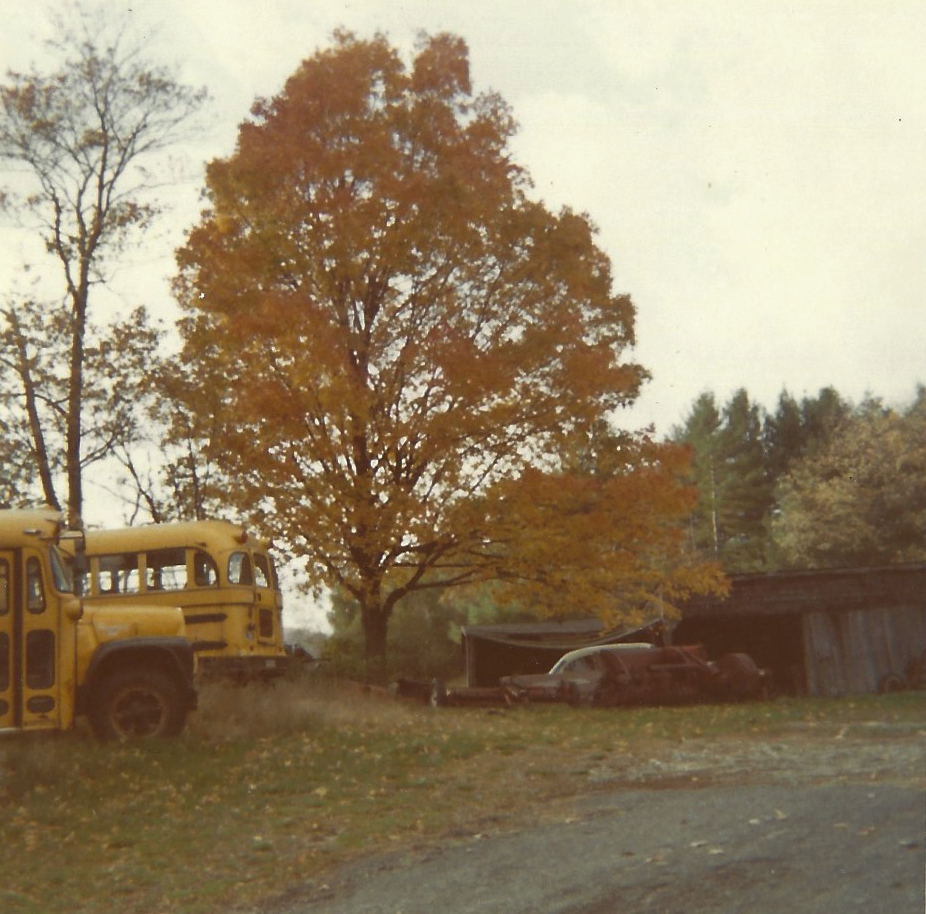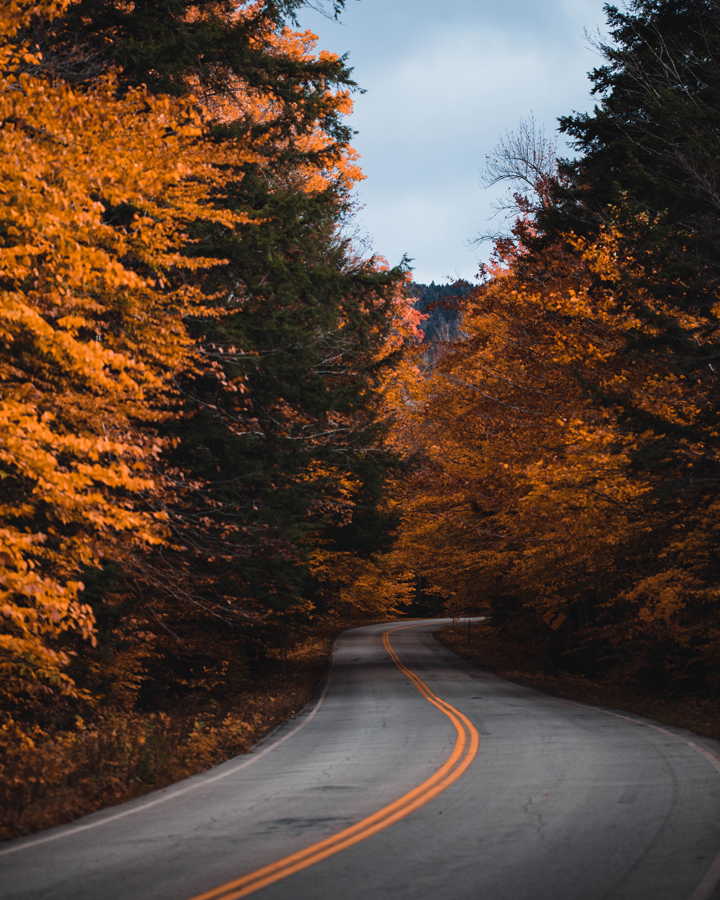
Buses Aplenty – The bus in the foreground is a 1958 International 68-passenger and the bus in the background is the 30-passenger 1950 International. If you look really closely, you’ll also spy a ’57 Chevy.
You could say buses run in our blood. I recently learned that in the 1950s, my grandfather bought his first school bus, a 1950 International 30-passenger. He drove the local kids around rural Grafton County in New Hampshire in between farming, town counciloring, and police chiefing. In later years, at different times, he bought both a ’58 and a ’59, both Internationals, 68- and 72-passenger models. For those, he had to fly out to Indiana to buy the buses and drive them back to make sure he had the buses ready to roll before the start of the school year – that’s a 1,000-mile drive in a 4-speed stick in a school bus with no AC. In August.
In the mid 1970s, my mother-in-law also drove a 4-speed stick BlueBird, with my pre-school pre-wife tucked in a seat behind her, piled with blankets. My wife had plenty of fans in the high school kids that boarded each day. Steph remembers chatting with the kids, that seemed so big and old, and her mother’s crocheted shift-knob cover that kept her hand warm throughout the New England winter.
Our brother-in-law is a current bus driver, using the latest and greatest rigs – automatics, AC, heat, safety bells and whistles up the wazoo.
My father recently told me that there were times when he also drove my grandfather’s bus. When my grandfather had fields to harvest atop his Farmall, and he was going to be too late to the bus route, he leaned on my father to take them. Another time, my father had to take the long, 17-mile route, the Grafton/Danbury, because my grandfather had to finish up putting out a house fire. Yes, he was a firefighter too. My father, at the time, was only 18.
I never got to take the bus to school, as I was always within walking distance of all three of my schools, up hill both ways of course. But, I do remember the rattles and sounds of sliding and slamming windows and kids screaming and chatting on the way to parks and rec events back in Beverly, MA, the town where I grew up on the Noth Shaw o’ Boston. We’d lumber into the Lynch Park parking lot, the bus door would open with an ungreased screech, and I could almost hear the driver exhale in his mind to be rid of us summer-soaked hooligans.
And now, while Steph and I get in our morning walk before the chaos of the day, we always wave – twice – to the bus driver that pilots her full-size Blue Bird, Voluntown Bus No.1, up and down our cul-de-sac. She always has a smile on her face, even through the mask, especially when there are no trash barrels at the end and she can swing that thing full circle without backing up her 40-foot rig.
In the darkened pre-rain skies, October leaves on fire, our driver opens the door, triggering the alternating red flashing lights to pick up some passengers, elementary school kids, one not much older than Steph was when she rode with her Mom. Even when I was a kid arriving at school, I always liked the contrast of the bright lights against the backdrop of a dark, wet, fall landscape. The big diesel engine bounces off the brilliant foliage and off to school they go.
After my grandfather parked the buses and retired from bus driving, farming, policing, fire-fighting, and all the other stuff he did as a hearty, do-it-all-or-it-doesn’t-get-done New Englander, I got the chance a few times to play around in those buses when I was about three or four years old. I remember stepping up into them both, sitting in the driver’s seat, yanking on the giant steering wheel while making dribbly bus noises only a 4-year-old could make. I would walk to the back, sitting in various green vinyl seats, looking out all the windows, peering out onto Route 4 in Grafton, a two-lane double yellow that ran through the town – a blink and you’ll miss it sort of place.
Now, we have our own bus. A mini, newer version of the bus my grandfather drove nearly 70 years ago. We also live in a similar single-blinking light town, in the middle of New England woods. Instead of hauling around school kids, we’ll be hauling ourselves and our pupper around to places as yet unknown, for adventures beyond the horizon.

Much of Route 4 looks like this gorgeous scene. Photo by Pawan Thapa on Unsplash.

